The Electronic Intifada 13 May 2013
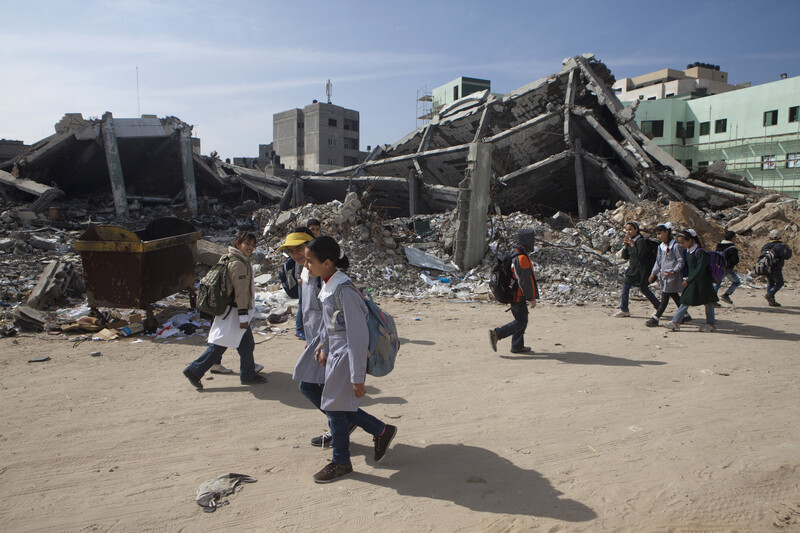
Palestinian children walk by a demolished interior ministry building, heavily bombed last November.
I was already in Gaza prior to Israel’s deadly eight days of attacks launched in November 2012. Once I left, the people I had photographed and interviewed during that terrible week remained at the forefront of my thoughts.
I had visited Jamal al-Dalu — who lost ten family members in an Israeli air strike on their home — several times. We were standing together when the body of his son was pulled out of the rubble, four days after the bombing. Jamal was to repeat his story to countless journalists and organizations, and I wondered how he managed to do so with such patience and kindness.
I also thought often about Nour Hijazi, whose father and two little brothers were killed, and who suffered serious shrapnel injuries to her back. I remember her lying in bed, obviously in great pain, yet managing to smile during the interview. I was deeply touched by her sweetness amidst such horror.
I also could not stop thinking about Jamal Salman. I was in the hospital in northern Gaza, minutes after he was brought in. His eyes were open and frozen, and he was covered in blood. Medical personnel rushed him away — I just had time to write down his name and where he was from. As I left the hospital, a woman was I later learned was Jamal’s wife was being pulled out of an ambulance, followed by a group of relatives who were crying and shouting. She died of her injuries.
Returning to Gaza in February, I was determined to see Jamal al-Dalu, Nour Hijazi and Jamal Salman again. I hoped I would find them standing strong.
Once the dead are buried, the dust and ashes settled and the camera crews gone, what happens to these families? It would be an illusion to think that things are back to “normal,” even though the mainstream media is no longer interested in Gaza. The survivors face their difficulties with courage and go on with their lives, but they will be forever affected, with little hope for justice or reparation, while a whole generation grows up with the fear of being bombed again.
Anne Paq is a French freelance photographer based in Palestine and member of the photo collective ActiveStills.
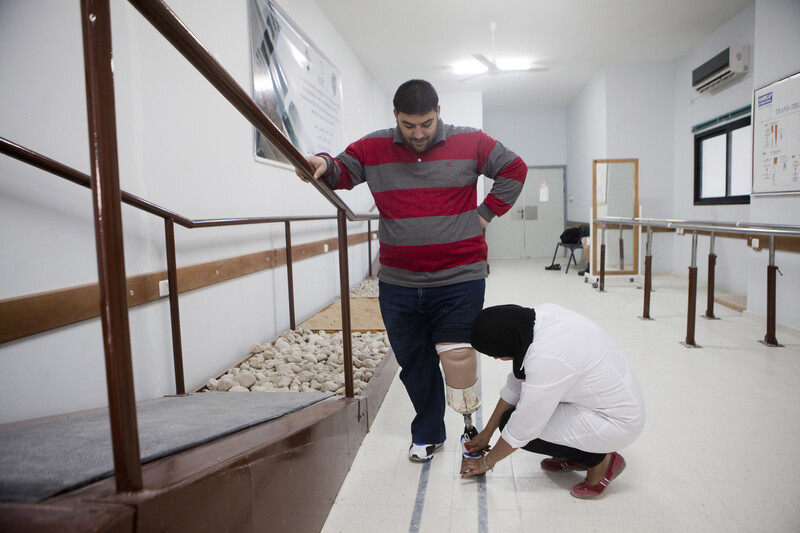
A Palestinian who lost his lower leg during Israel’s winter 2008-09 attacks on Gaza at a rehabilitation session in the only facility for artificial limbs in Gaza City. Palestinians injured last November will have to wait months for their wounds to heal before being fitted for artificial limbs.
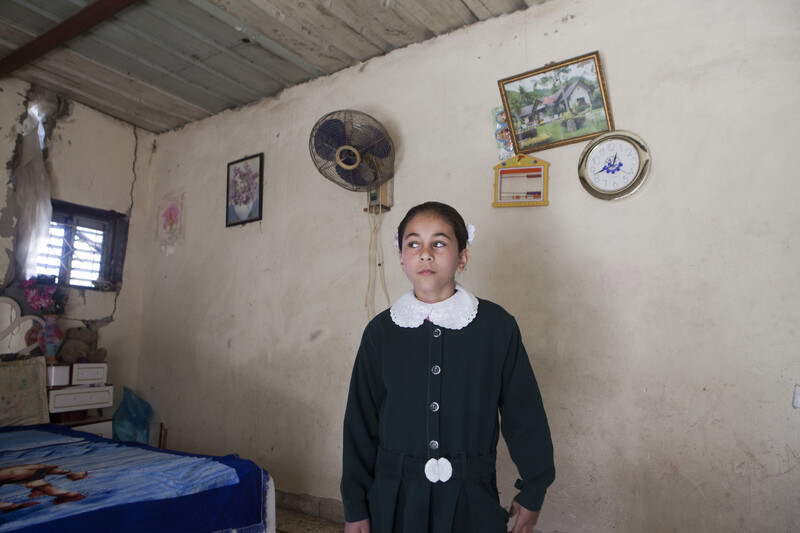
Saja Muhammad Abu Namous, 11 years old, in the Gaza City room where her family slept during the Israeli military assault. Saja, whose home was damaged, and other family members receive psychosocial treatment.
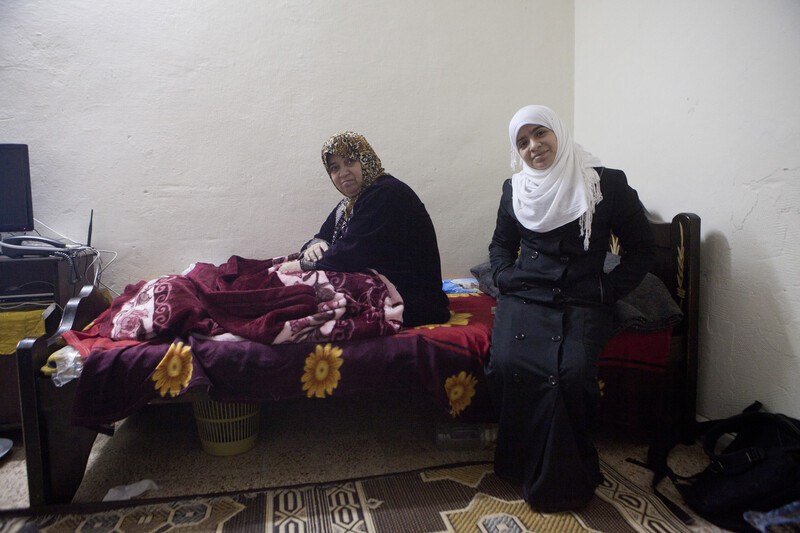
Amna Hijazi (left) and her daughter Nour (right) rent a home in Jabaliya refugee camp after their family home destroyed in an Israeli missile strike that killed Amna’s children Mohammad (4) and Suhaib (2) and her husband Fouad. Amna was in a coma for six days and Nour, who had two broken vertebrae in her spine, was bed-ridden for two months and now walks with difficulty. “The first day was difficult for me due to the loss of my father and brothers. I used to play with my brothers, talk to them, hug and spoil them every day when I came home from school,” Nour said in February.
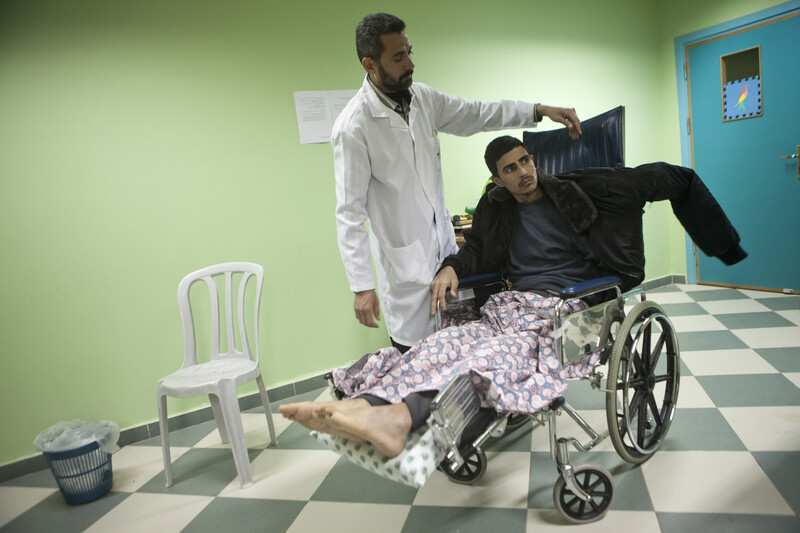
Jamal Salman is treated Al-Wafa Rehabilitation Center in Gaza. Jamal was severely injured during an Israeli drone strike which hit the courtyard of his house in Beit Lahiya and killed his wife, 22-year-old Tahreer Ziad, and brother-in law. Jamal, the father of two small children, was first treated in Egypt and is now paraplegic and has limited use of one of his arms.
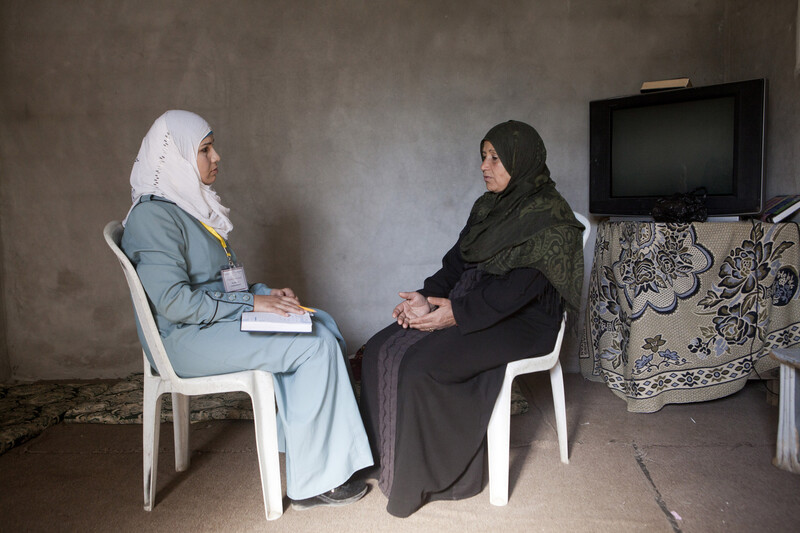
Itimad Muhammad Salman, mother of Jamal Salman, who was severely injured during an Israeli drone strike, during a psychosocial support session at a home in Beit Lahiya.
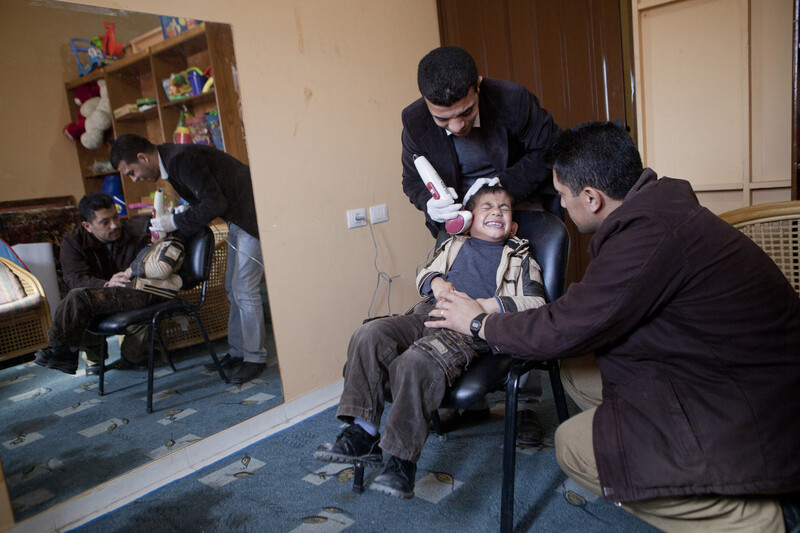
Mohammed Abu Sakran, a four-year-old from Gaza City, in a speech therapy session at a clinic. Mohammed suffers from impaired speech, which has worsened dramatically since the Israeli offensive.
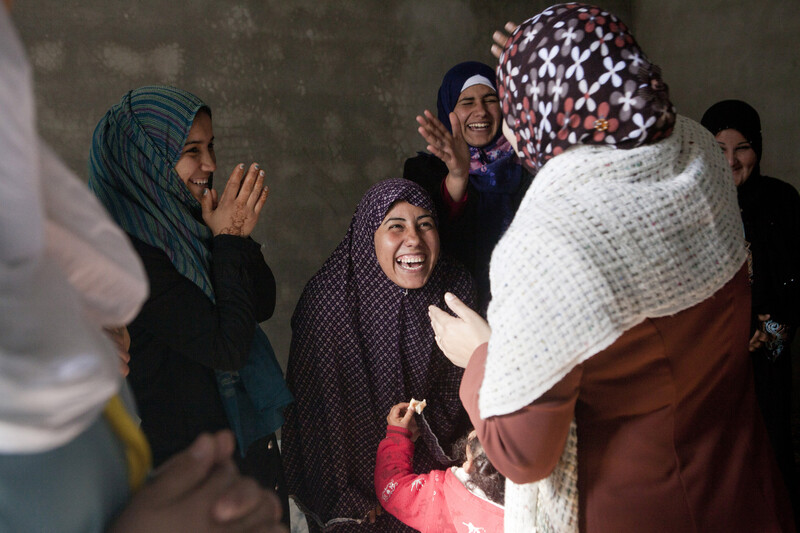
Women, many of whom were affected by Israel’s offensive, after a psychosocial group session in a private home in Beit Lahiya.
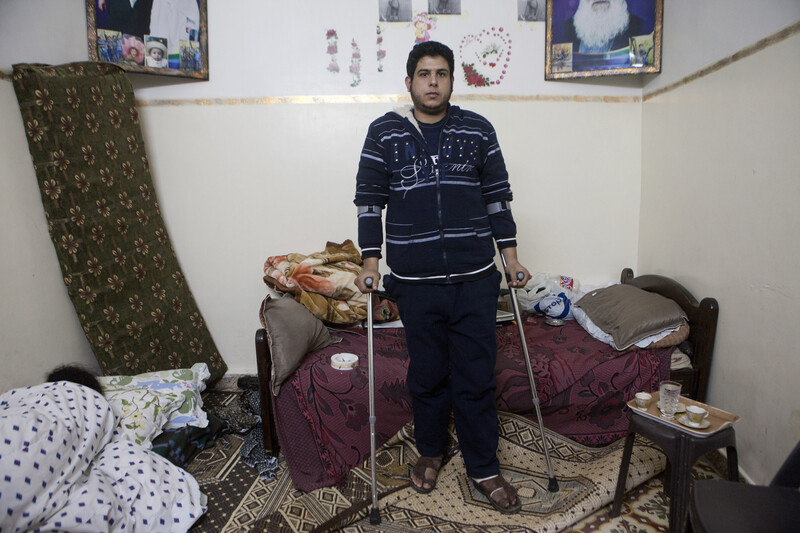
Muhammad H, at his Gaza City home, was injured when two Hellfire missiles struck a second-story apartment on Baghdadi Street on 20 November. The blast killed four persons and missile fragments wounded more than 20, including Mohammad, who lost his job due to the injury. Muhammad, who goes to weekly rehabilitation sessions at the Medecins Sans Frontieres clinic, suffers from depression exacerbated by a lack of physical activity and passes his time playing computer games.

Rebuilding the Hijazi family home in Jabaliya refugee camp. The family managed to raise money donated by friends, relatives and supporters.

Jamal al-Dalu in his shop in the market in Gaza City. Jamal lost ten of his closest relatives, including his wife and one of his sons, and four grandchildren after his home was bombed. Jamal, who returned to work in his shop just two weeks after the attack, currently lives with two of his sons and a daughter-in-law in a house rented for them by the government. “All the happy life is gone now. Thirty years of marriage and suddenly I lost most of my family members; it’s good that I haven’t lost my mind yet and my health,” Jamal said in February.

Amal Ahmad Abdallah, with her six-year-old son in the family’s home in Khan Younis, spends her week at Al-Wafa Rehabilitation Center in Gaza City and returns home every weekend to visit her family. Amal was baking bread with her young son when a missile exploded near her house; she was seriously injured and is now paraplegic. Amal is a teacher but does not know how she will be able to resume working because of the permanent injury.

Khader Haidar al-Zahhar, 20, at the al-Quds Satellite Channel office in Gaza City. Khader’s lower right leg was amputated after an Israeli strike on his office building. Initially hospitalized in Egypt, he had 12 operations on his leg. At the time of the attack, he was a volunteer. Now he has been employed by the channel and goes into the office every two days. Khader remains positive: “My injury did not affect my desire to continue my work. I’m just waiting for my wound to heal completely to have an artificial limb fitted; I want to work as a cameraman.”





